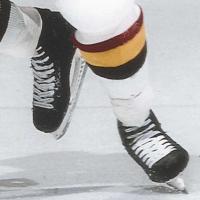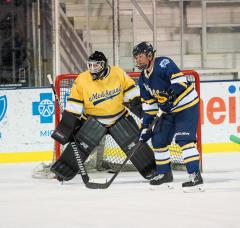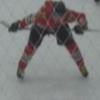Slate
Blackcurrant
Watermelon
Strawberry
Orange
Banana
Apple
Emerald
Chocolate
Marble
Slate
Blackcurrant
Watermelon
Strawberry
Orange
Banana
Apple
Emerald
Chocolate
Marble
All Activity
This stream auto-updates
- Today
-
And those Vapor XX’s only had a little red dot in the flex notch on the facing. It wasn’t till the XXX that red became prevalent.
- Yesterday
-
True of the early days. My referencing is regard to the evolution of the Vapor name.
-
When it comes to refining your overall look, the small details can make a major impact. One of the most overlooked yet powerful details in footwear fashion is the Lace Styles For Shoes. Not only do they serve a functional purpose, but they also offer a subtle way to express your personality, enhance your outfit, and improve comfort. Whether you're going for a clean professional vibe or a more relaxed, creative appearance, the way you lace your shoes matters. The Classic Criss-Cross Style The most common and timeless method, the criss-cross style works for almost any type of shoe. From dress shoes to casual sneakers, it provides strong support and a symmetrical appearance. This style helps keep pressure evenly distributed across the top of your foot, which adds both durability and comfort. The Straight Bar Lace Style If you're aiming for a sleek, clean look, the straight bar lace style is ideal. It’s commonly used for formal shoes, making them appear neat and polished. This style hides the crossing of laces underneath the eyelets and creates parallel lines across the shoe, giving a modern and tidy feel. The Ladder Lace Style For those who want something more structured and bold, the ladder lace style delivers both function and fashion. It offers a tight fit and stands out due to its geometric design. Often used in performance or statement footwear, this method keeps the shoe tightly secured while also grabbing attention. The Zipper Lace Style If uniqueness is what you're after, the zipper lace style is an artistic and edgy option. It weaves the lace in and out to mimic the look of a zipper, giving the shoe a layered and eye-catching texture. This style is perfect for adding a creative twist to simple footwear. The Loop Back Lace Style The loop back lace style brings both flair and adaptability. It loops the lace through previous layers, creating a bunched, 3D effect. This method is excellent for people looking to adjust tension at specific points on the shoe, offering both aesthetic and ergonomic benefits. Choosing the right lace style can transform a simple shoe into a statement piece. By experimenting with Lace Styles For Shoes, you add a personal touch to your look without needing to change your entire wardrobe. Whether for comfort, support, or pure style, the lace you choose—and how you use it—can say more than you think.
-
When it comes to refining your overall look, the small details can make a major impact. One of the most overlooked yet powerful details in footwear fashion is the Lace Styles For Shoes. Not only do they serve a functional purpose, but they also offer a subtle way to express your personality, enhance your outfit, and improve comfort. Whether you're going for a clean professional vibe or a more relaxed, creative appearance, the way you lace your shoes matters. The Classic Criss-Cross Style The most common and timeless method, the criss-cross style works for almost any type of shoe. From dress shoes to casual sneakers, it provides strong support and a symmetrical appearance. This style helps keep pressure evenly distributed across the top of your foot, which adds both durability and comfort. The Straight Bar Lace Style If you're aiming for a sleek, clean look, the straight bar lace style is ideal. It’s commonly used for formal shoes, making them appear neat and polished. This style hides the crossing of laces underneath the eyelets and creates parallel lines across the shoe, giving a modern and tidy feel. The Ladder Lace Style For those who want something more structured and bold, the ladder lace style delivers both function and fashion. It offers a tight fit and stands out due to its geometric design. Often used in performance or statement footwear, this method keeps the shoe tightly secured while also grabbing attention. The Zipper Lace Style If uniqueness is what you're after, the zipper lace style is an artistic and edgy option. It weaves the lace in and out to mimic the look of a zipper, giving the shoe a layered and eye-catching texture. This style is perfect for adding a creative twist to simple footwear. The Loop Back Lace Style The loop back lace style brings both flair and adaptability. It loops the lace through previous layers, creating a bunched, 3D effect. This method is excellent for people looking to adjust tension at specific points on the shoe, offering both aesthetic and ergonomic benefits. Choosing the right lace style can transform a simple shoe into a statement piece. By experimenting with Lace Styles For Shoes, you add a personal touch to your look without needing to change your entire wardrobe. Whether for comfort, support, or pure style, the lace you choose—and how you use it—can say more than you think.
-
 pelihe9060 joined the community
pelihe9060 joined the community
-
I don't believe so, seem to be true to size, and same as my Jofa 5070's I've been using since the 90's.
-
So he ended up getting FT4 Pros last year when this was posted. As indicated above, they really weren't all that much lighter than the "beefier" CCM models. They were a bit more streamlined which is what he was looking for. Those made it about 3/4 through the season before tearing at the knee. Replaced with FT6 Pros.
-
Just got my son XF pros for his shins, he's smaller than your kid but the features on them are pretty awesome, calf wrap is adjustable depending on tongues in, tongues out, and preference, as well as the length of the strap. Certainly a hair wider than FT line or Vapor line but the kneecap on the bauer offerings seemed very soft compared to the JDP cap on the CCM lines IMO
- Last week
-

Questions/Opinions Wanted on Smell and Gear
start_today replied to poly's topic in Ice Hockey Equipment
Are you a fan asking about the smell of a rink? That has nothing to do with the equipment, and everting to do with the cleaning processes at the rink. It smells like bodies and bathrooms because the rink don’t clean thoroughly, if at all. It’s the same reason most public bathrooms smell stronger than yours at home. -
Sniper9 started following Edge Holder vs XS Holder – Which is Better? and CCM Jetspeed XTRA plus SMU
-
Different models and generations all fit slightly different. I couldn't put my feet into a fit 1 ultrasonic and a fit 2 squished my forefoot still, but I wear a fit 1 Mach. You really just have to try them on.
-
 jackhicks121 joined the community
jackhicks121 joined the community
-
 Leinbachjon changed their profile photo
Leinbachjon changed their profile photo
-
 jitsergun joined the community
jitsergun joined the community
-
Not always. The best Vapors of all-time, 8 and 10, had no red whatsoever. Their second tier models (4 and 6) did, but it wasn’t until XX that the Vapor stain was first seen.
-
Granted the Hyperlite 2 skate only had a faint trace of red on the tongue but this skate has no red, which was always a Vapor trademark. Lower models have some red still.
-
Can't tell from those pictures whether or not there is significant creasing to the boot? Side picture would shed more light on that.
-

Edge Holder vs XS Holder – Which is Better?
Sniper9 replied to bthompson1286's topic in Ice Hockey Equipment
Ah ic. I would still choose xs over edge or powerfly. -
U can try to rebake. But at one time, true customs also had arches that formed to your foot from the scanning process. I'm not sure if they still do or not since introducing the genetix insoles. My first two pairs of trues had a custom shaped arch built into the boot. I know this because my right foot pronates and as I was scanned for my first pair, the one skate came out with no arch at all and caused my right skate to feel more sloppy than the left. I solved that with Bauer speed plates. Second pair I was cognizant to not allow my arch to collapse during the scan and it came out fine. So to answer your question, I would rebake but it may provide only limited improvement in fit if the arches are flat and don't provide you any support.
-

VH Footwear/TRUE by Scott Van Horne
eugene8080 replied to dsjunior1388's topic in Ice Hockey Equipment
Does anyone else's True Customs ankle area curve out like mine? (The the red lines I drew). I have flat feet where my feet pronate and ankles collapse in, and I think the True skates may have been baked to form to this shape. I've been working on strengthening my foot arch, and straightening out my ankle pronation so it's no longer in that shape. My power skating coach notices that I'm much better on my outside edges than my inside edges where I collapse my ankles and fall into my turns too much. My question is, do your Custom True skates also formed this curved shape like mine? Is it this pronounced? Should I try to re-bake my skates with my feet not pronated and not flat-footed? -

Edge Holder vs XS Holder – Which is Better?
bthompson1286 replied to bthompson1286's topic in Ice Hockey Equipment
Sorry i meant to say that the steel I’m using is offered in both the edge holder and xs holder -

Edge Holder vs XS Holder – Which is Better?
Sniper9 replied to bthompson1286's topic in Ice Hockey Equipment
I don't have experience with the xs but with the SB 4.0 which is essentially the same holder but different locking mechanism for the steel. I liked how it was stiffer than the edge holder. I didn't find any adjustment between the edge and CCM holders but I also didn't find much a difference between the hre true shift max and edge and I know a lot of people do. For me, I would get CCM for overall stiffness, durability and ease of changing the locking mechanism without having to remove the holder to do so. Lastly, I know you have a multi fit steel but the fact ccm holders you can get ANY steel you want for it without compromising some fit issues of a multi fit, is the final selling point for me. Step/jrz specific to the holder. I currently use the jrz multi on my edge holders and they are good but they aren't as snug as Bauer and bladetech steel. But I prefer jrz/step over anything else. I'm not sure how the jrz multi fits fit in the CCM holders but the notch made for the pin doesn't look that deep and secure imo. If the holders on my machs ever crack or go bad, I'm swapping them to the xs holders. -
Hey everyone, I’m in the process of choosing between the Edge holder and the XS holder for my skates and would really appreciate some insights from those who’ve used both. I’ve tried both holders and haven’t noticed a major difference in performance, but I’m trying to decide which one is the better fit for my long-term use. Here’s some context about my skating style and preferences: My size and playstyle: I’m a bigger player (6’2", 210 lbs) who plays a combination of aggressive, physical hockey with a focus on speed, sharp turns, and quick bursts of acceleration. I also do a fair amount of grinding the boards and tight turning. Given my size and style, I want to make sure the holder I choose gives me the best edge control, stability, and responsiveness. Key questions I have: Attack angle: I really like a more aggressive attack angle for quicker acceleration and sharper turns. From what I understand, the Edge holder has a more aggressive attack angle, which gives a quicker edge bite and more aggressive turns. However, I’ve heard that the XS holder’s more neutral attack angle might provide better stability at high speeds. Is the more aggressive attack of the Edge worth it for a bigger player, or does the XS holder’s neutrality give better overall power transfer and edge control? Stiffness: I know the XS holder is stiffer than the Edge, providing more stability and consistent edge control during aggressive skating. For someone my size, does the stiffer XS holder make a noticeable difference in terms of maintaining control when pushing hard on the edges, or does the more flexible Edge holder offer enough responsiveness and agility? I’m wondering if the flexibility of the Edge might help with agility but at the cost of a bit of stability during heavier skating. Weight/feel: Since I’m a bigger player, does the extra weight of the Edge holder hinder quick movements, or does the stability it offers help with balance and edge control? Would the lighter XS holder be better for my game, or is the weight of the Edge holder something I can work with in terms of power and durability? Durability: I’ve noticed that the Edge holder uses a plastic trigger, while the XS holder uses a metal tooth. As a larger player, I’m concerned about long-term durability. Is the plastic trigger of the Edge holder reliable enough, or does the metal tooth of the XS holder hold up better over time, especially under the added stress from my weight and aggressive skating? Quickness vs Stability: As a bigger player, stability is important, but I also want to maintain a high level of quickness and agility. Does the XS holder's stiffness compromise the responsiveness for quick pivots and tight turns, or does it actually enhance control for those moves? Does the Edge holder give enough stability for physical play while still being responsive in tight spaces, or is it too flexible for more aggressive skating? Steel compatibility: I’m using a steel that is offered in both the XS holder and the Edge holder, but I want to double-check if there’s any noticeable difference in performance between the same steel in the two holders. Is there any difference in how the steel performs in these two holders in terms of edge hold or durability? Personal preference: For those of you who’ve used both, do you find that one holder works better for players of a certain size or style? I’m particularly curious if the Edge holder is favored by players who like a more aggressive, fast-paced style, while the XS holder is better for those who focus more on power and control. If you had to recommend one for a bigger player who likes aggressive cuts and fast starts, which would you choose? If anyone has experience with both holders and can speak to how the aggressive attack angle of the Edge holdercompares with the stiffness and durability of the XS holder—especially for a bigger player like me—I’d love to hear your thoughts!
-
 BobbyTortilla joined the community
BobbyTortilla joined the community
-
 mrfishlung joined the community
mrfishlung joined the community
-
Strange to see Vapor gradually losing its L-cut. Looks like a one90ish tendon guard. The graphics aren’t doing it for me. My favorite post-rib Vapor for looks is still Hyperlite.
-
-
Why not ask this BEFORE you buy?
-
There is a pic online of a pro player in France with the stick and skates. Red colour way. Skates look great imo but nothing special on the stick graphics - looks pretty boring. I know most players like the muted look but I kinda need a bit flash on twigs looking forward to some more info on this stick
-
The first version was an awesome skate. It’s clear Bauer’s been giving nods to their Mission IP lately: the Amp Fly Weight stripe on Vapor X1’s (first gen.), the Drive Shaft bar on the Power Fly holder, and the flex notch (though not a Mission invention) in the Supreme Mach facing.
-
Just ordered these in Wide width, very eager to get them, got them at IW hockey for 279 before tax. They seem to offer top features at beginner level skate prices. My question is did CCM make the latest Jetspeed a bit wider. I orginally purchased a almost brand new customer returned FT6 Pro for 397 OTD, it was pretty much perfect condition but too snug, had to go the punch in routes on both navicular bone areas and I did not want to take chances with punching in multiple areas. Are they Wides in Jetspeed now close to a reg D with or Fit 2 Bauer. Because thats what I am really D, or Fit 2. I did not want to link the IW hockey page since my browser automatically signs me into the IW account https://sportsexcellence.com/en-us/products/ccm-jetspeed-xtra-plus-hockey-skates-intermediate?pr_prod_strat=e5_desc&pr_rec_id=e70bee812&pr_rec_pid=8453552079160&pr_ref_pid=8453547524408&pr_seq=uniform
-
Ah, yes! Forgot the name but remember it had "Fly" in it. They had the crossbar in the holder for torsional rigidity.







